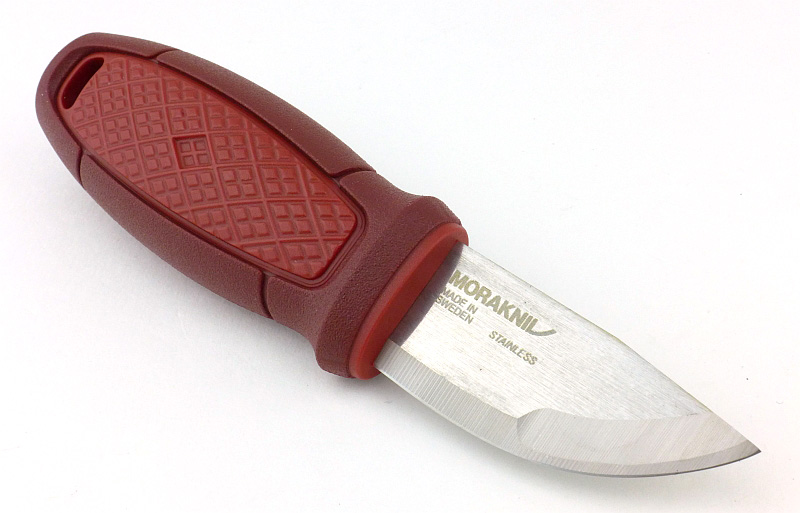In the third of a series of reviews looking at Morakniv’s latest models, we meet the Eldris, a fixed blade knife that is so easy to carry, Morakniv call it their ‘folding knife’.
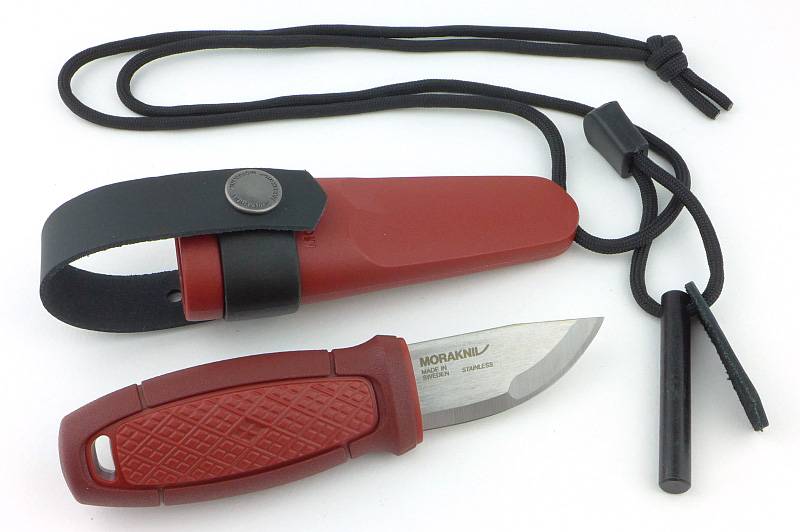
The Blade and Handle Geometry:
Most knife specifications have a basic description of the blade geometry, but in this section I will be taking a more detailed look at geometry and balance.
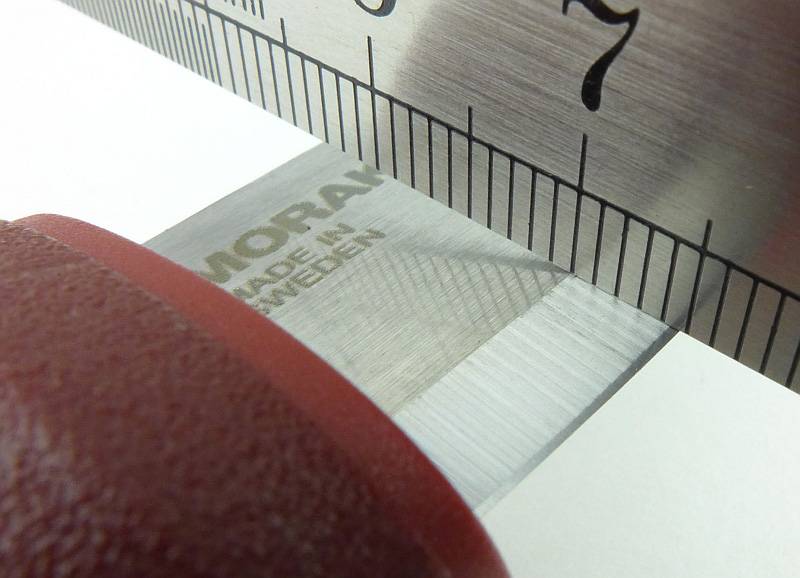
Using a set of gauges and precision measuring equipment including a Vernier protractor, callipers, fixed radius gauges and the unique Arc Master adjustable radius gauge (the one that looks like a crossbow).
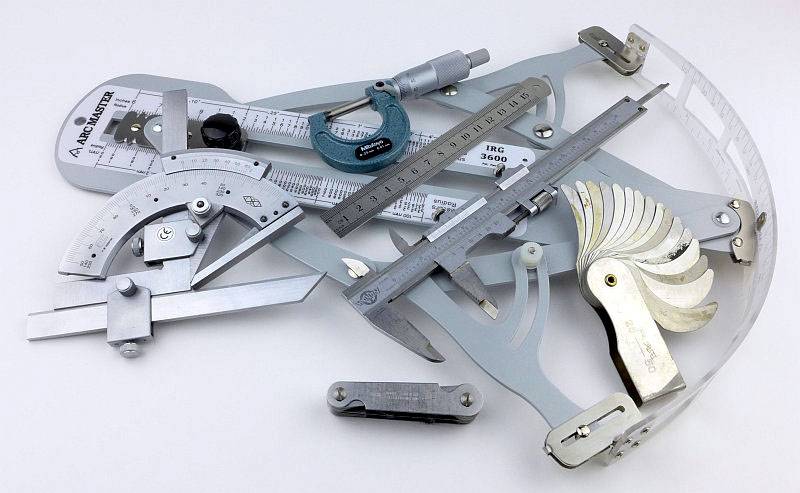
These measurements have been tabulated and are presented along with a few reference blades (8″ Chef’s Knife, 5.5″ Santoku and the popular Fällkniven F1).
Key aspects such as the primary bevel angle, grind type, blade depth, blade thickness, length, weight are detailed, along with balance information.
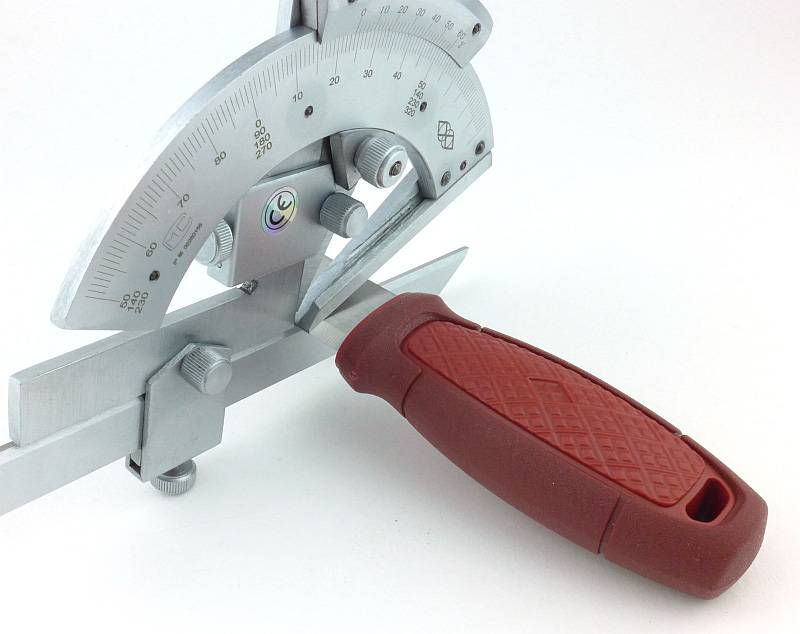
The ‘Balance relative to the front of the handle’ tells you if the knife will feel front heavy, or if the weight is in your hand (a positive value means the weight is forward of the front of the handle). The ‘Balance relative to the centre of the handle’ indicates how close to a ‘neutral balance’ the knife has in the hand.
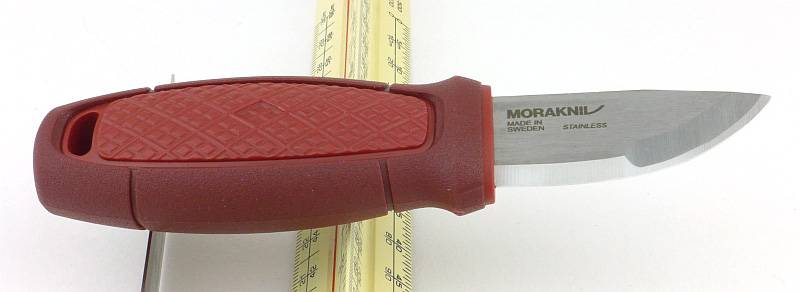
In the case of full convex grinds the approximate centre of the grind is used for the primary bevel angle estimate.
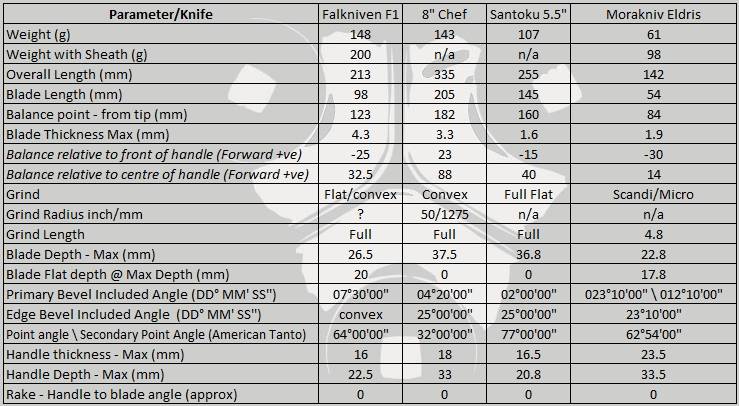
The blade is made from 12C27 Swedish Steel.
Explained by the Maker:
The reasons for certain design choices may not be clear when simply looking at an object, so this section is intended to give an insight into the thinking behind a design by speaking to the designer themselves.
Unfortunately I can’t always get time with the designer so will use this section to include relevant information about the knife and its designer.
This is an interview with ‘Head of Production’ at Morakniv, Thomas Eriksson, from IWA 2017 by Tactical Reviews.
The discussion includes how the factory edge is created, maintained and also includes micro-bevels and zero-grinds. It is 16 minutes long, so you might want to come back to this after reading the rest of the review.
Video Edited with – Cyberlink Director Suite 5 (PowerDirector 15 and AudioDirector 7)
Camera – Panasonic HC-V770 Microphone – Tonor TN120308BL and/or Takstar SGC-598
A name that tells a story – Eldris…
The traditional summer grazing land (‘fäbodar’) for the village on the opposite bank of the river from the Morakniv factory is named Eldris. During the summer time the people from the village lived on the ‘fäbod’ and used only what nature had to offer.
“To name our pocket size knife Eldris after the place and the people who lived there is our way of paying tribute to our roots. Our ancestors and the surroundings of Mora are all parts of who we at Morakniv are today. The Eldris knife – the flexible companion when doing everything from crafting to lighting the evening fire – is our interpretation of the life once lived at the ’fäbod’ of Eldris.”
“The Eldris knife has been in our minds for a long time, the small knife that fits easily in your pocket or hanging around your neck. Most times the modern outdoor life doesn’t need much more than this knife. You could say that this is our interpretation of the folding knives that are very popular today, but Eldris has the advantages of the rigid features of a fixed blade” – Arvid Larsson, Design Engineer.
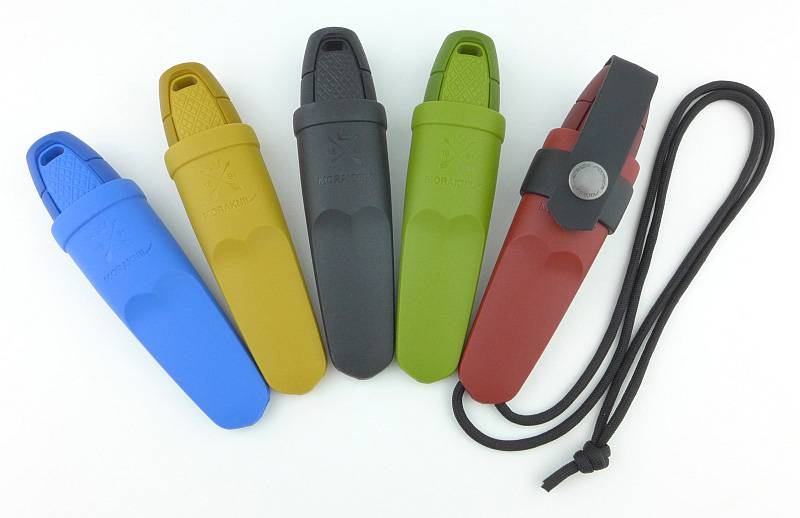
“The colours of Eldris are inspired by our surrounding region and our history. The black of coal is never far away if you go out in the forests around Mora. Suddenly you’ll happen upon an old charcoal pit or the remains of one. The well-known Dala red (or Falu red) colour gets its pigments from the Falu copper mines. Since as far back as the 1700s, the familiar red-painted houses with white frames have spread across the country and become an international symbol for Sweden and the county of Dalarna.
As well as the Dala red colour, we also have a Dala blue, which can be seen on everything from building details to clothes. It’s even in our regional coat of arms, together with the crossed arrows and the royal crown. The moss green colour is inspired by the nature and unique surroundings of the area around Lake Siljan. Deep in the forests we find the calm and inspiration for this green hue. Finally, we have the golden ocher colour, taken from the Dalarna paintings of the 1600’s, and also the folk costumes that people in Mora have worn since time immemorial.”
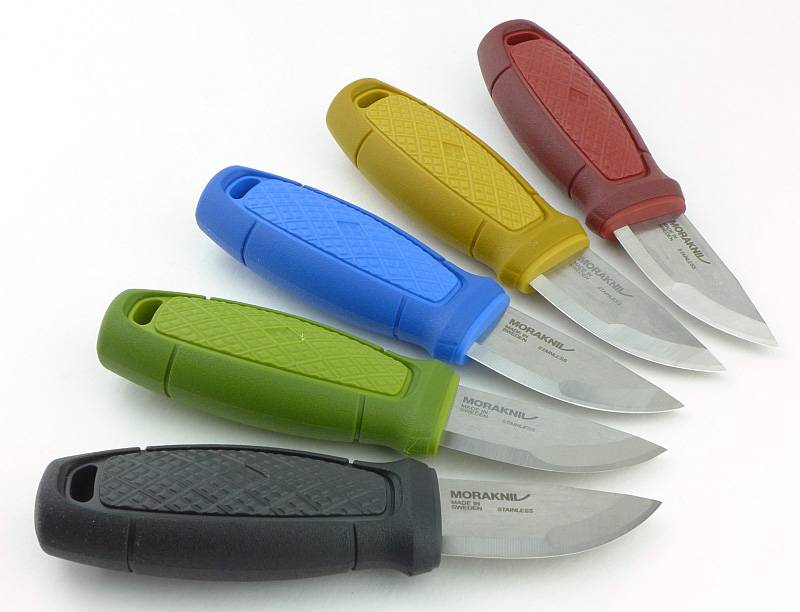
A few more details:
The five different colours of the Eldris. The fire-starter optional kit is attached to the bottom of Eldris knife box.
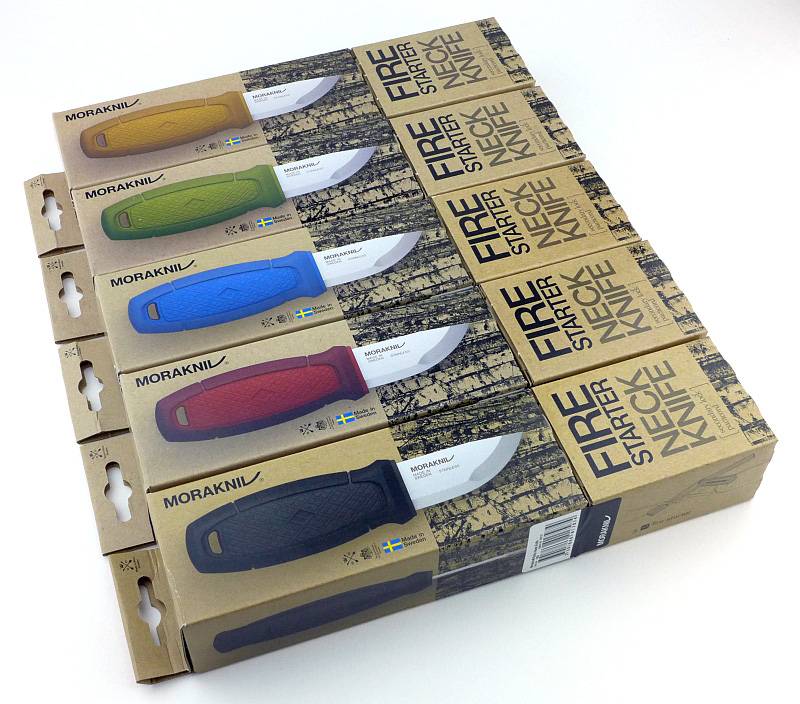
For the fire-starter kit version of the Eldris, this is the full set of components. The Eldris knife and sheath, security strap, length of cord and ferrocerium rod with leather tab and cord loop.
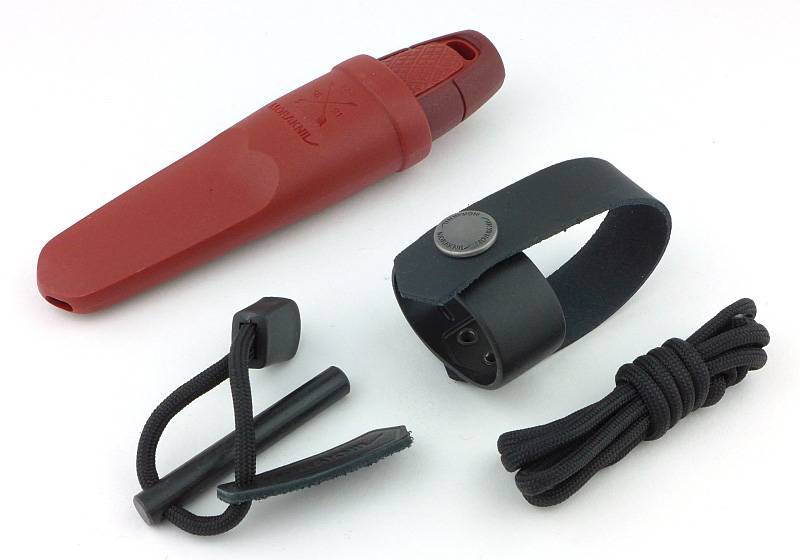
As the bare knife and sheath, the Eldris becomes a pocket knife, small and streamlined and easy to pop in a pocket.
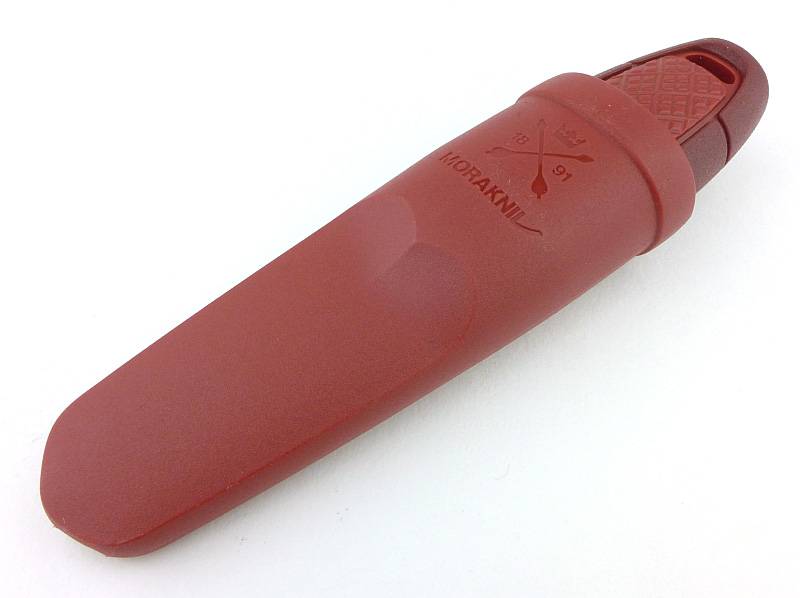
Moulded into the sheath are the Morakniv logo and crossed arrows of the Swedish province Dalarna.
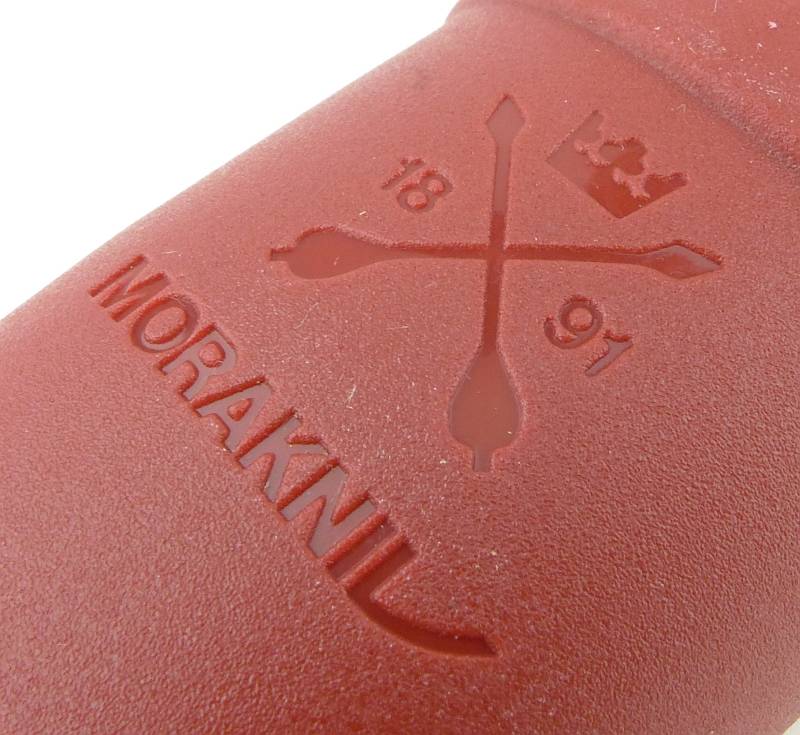
On the back of the sheath are the hollows for the security strap ring to clip into.
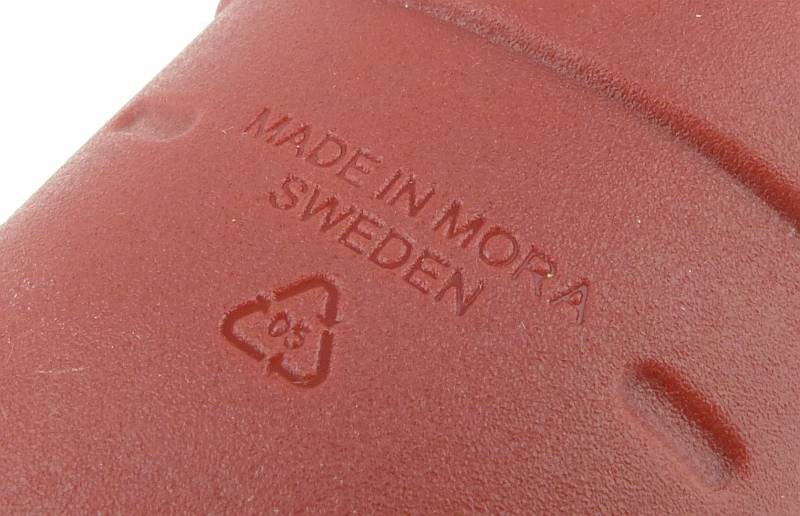
The security strap consists of a plastic ring which clicks into place on the sheath with a leather strap that uses a press stud to secure the strap in place.
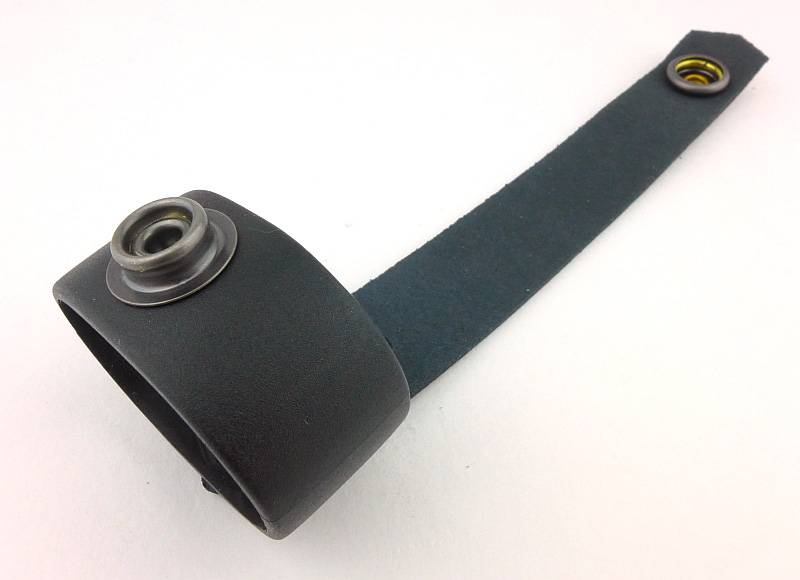
Looking inside the security strap ring, you can se the lugs that click into place in the corresponding hollows on the sheath.
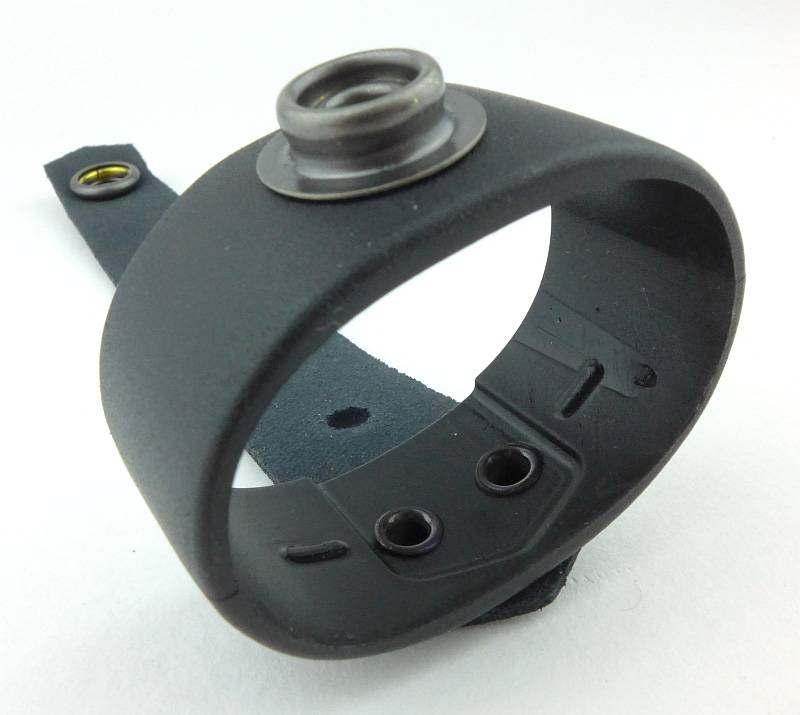
Adding the security strap adds very little bulk to the Eldris.

At the tip of the sheath are two holes which can be used for fitting the neck lanyard and also act as drainage holes.
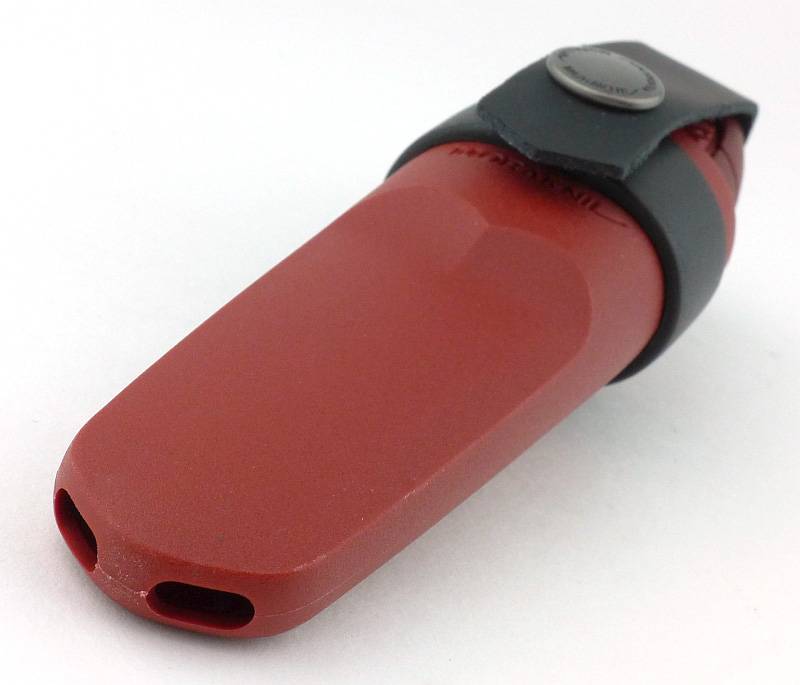
For use as a pendant knife you can also fit the fire-rod onto the neck cord.
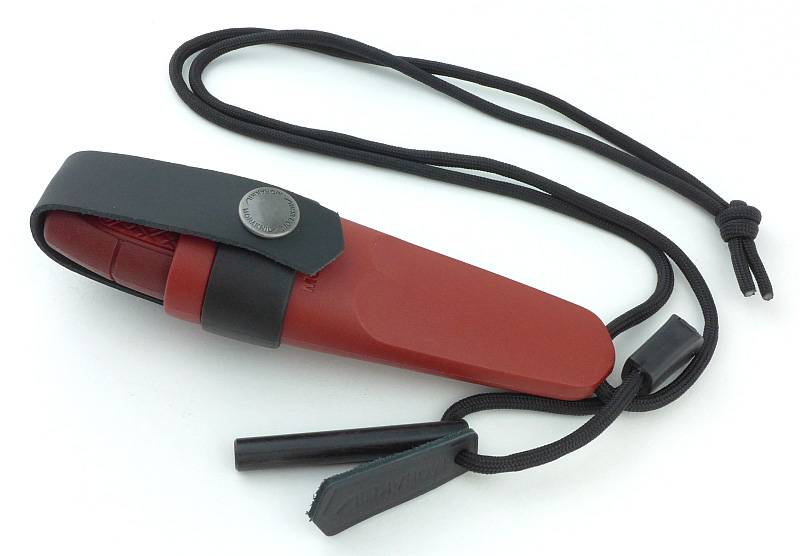
The Eldris is a small knife and being a fixed blade is more reminiscent of a wood carver’s tool.
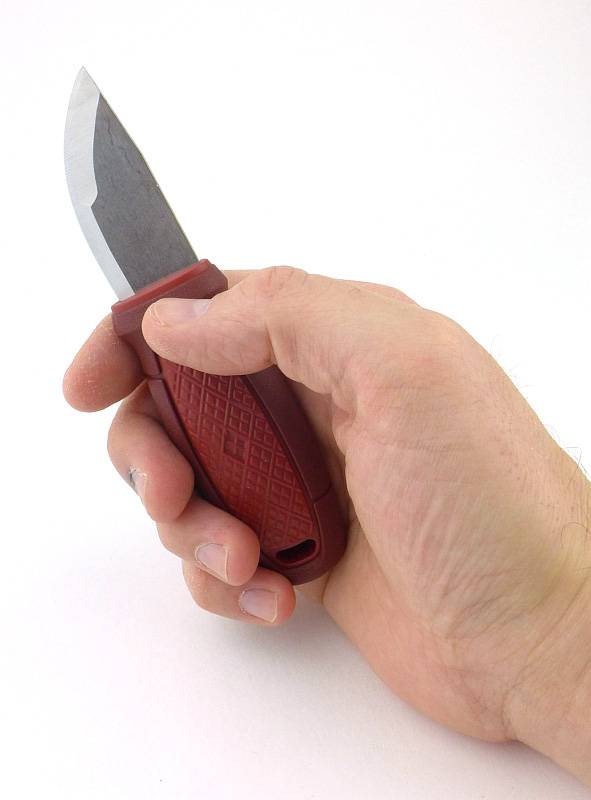
However, you can get a strong grip on it thanks to the handle still having enough bulk (unlike most pendant/neck knives).
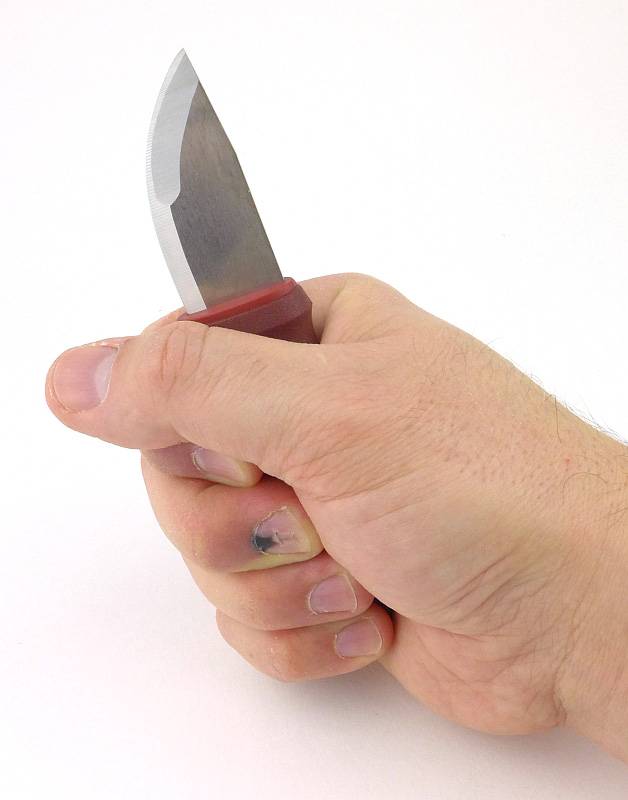
Full Scandi-grind blades are often not so good for slicing due to the full blade thickness being maintained for the majority of the blade depth. In the Eldris, similar to Morakniv’s Kansbol, there is additional profiling for the front half of the blade which thins down the blade making it a better slicer. As a super compact all-rounder, it really helps that Morakniv have included this extra profiling.
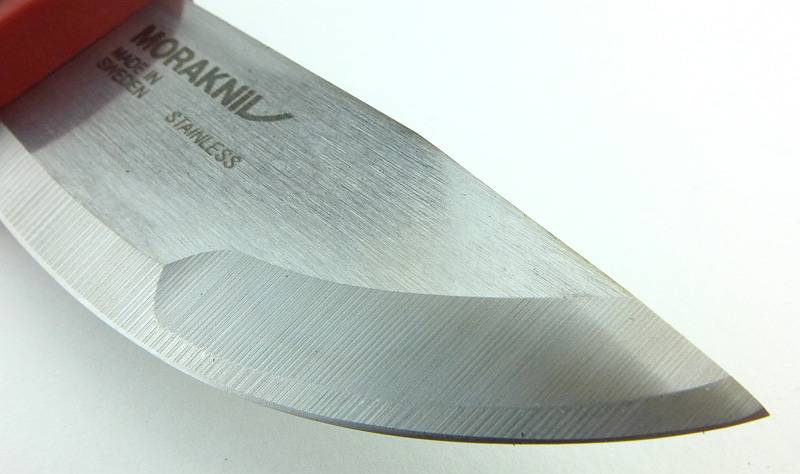
Also note, the factory edge micro-bevel which is described in the video.
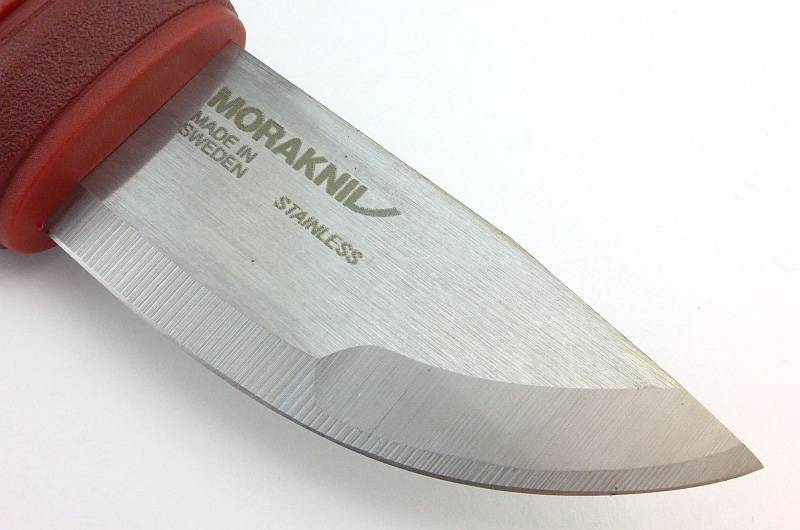
There is no choil or ricasso, with the blade edge going all the way into the handle.
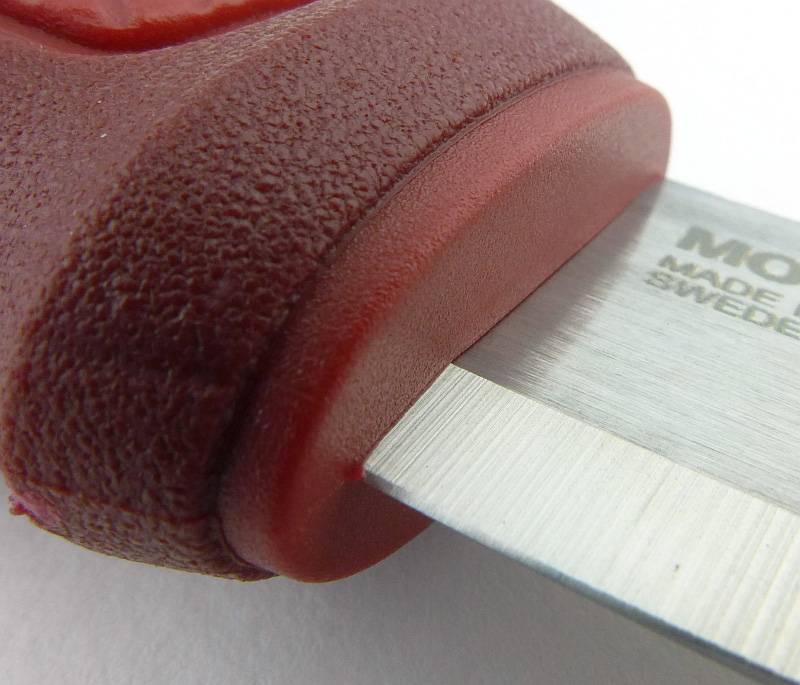
What it is like to use?
The principle that Morakniv have aimed for with the Eldris is to bring together the features and advantages of a pocket size knife but with a fixed blade instead of a folding one. A smaller knife is not only easier to carry, but gives you increased control when using it, and is safer to handle than a larger one.
By choosing a fixed blade, the design is more durable and better suited to rough use than a folding knife. Yet when the knife is sheathed, it is still small enough to be easily carried in a pocket.
It is no surprise that the Eldris features a Scandi-grind, and this makes it well suited to working with wood as well as making it easy to keep sharp. Having given the Eldris a good workout, here I’ve given it a quick touch up on a stone and then a strop.
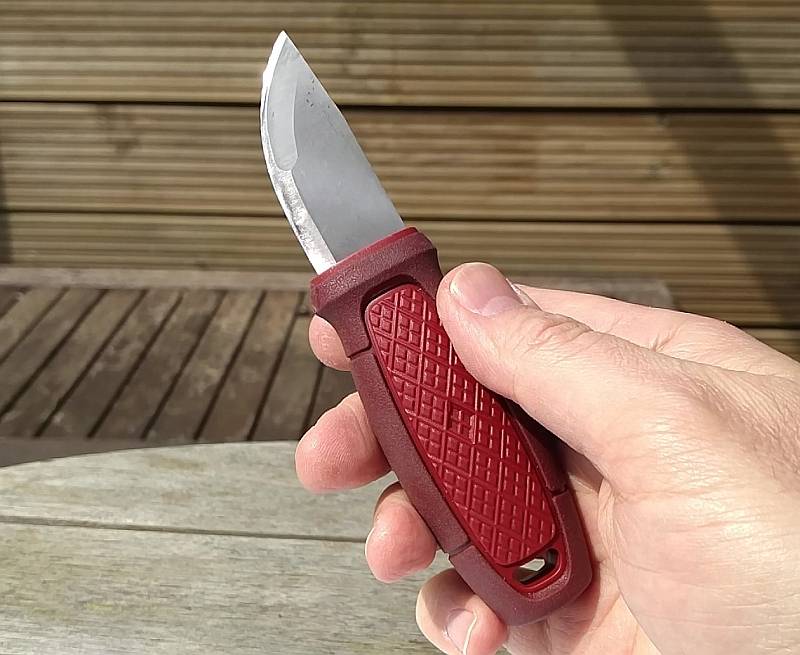
After the quick maintenance, it was falling through paper.
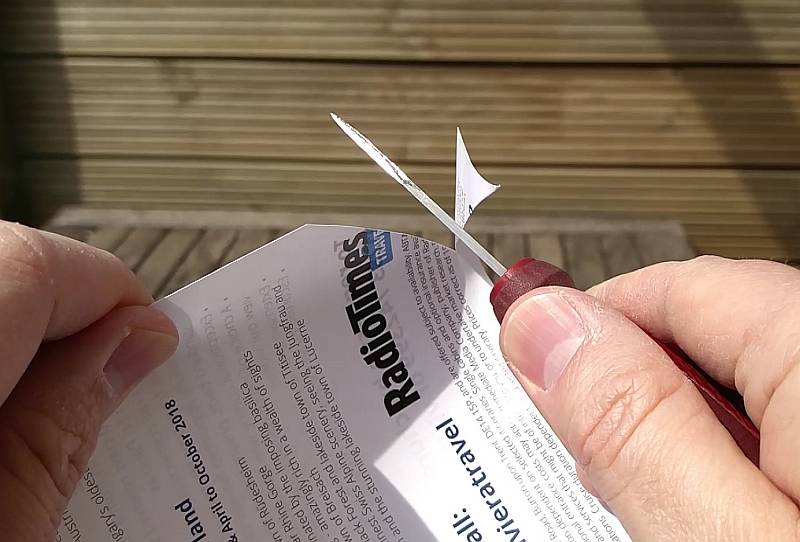
In the case of the Eldris Fire Starter Kit, a fire-rod is included. Of course you can provide your own fire-rod and just make use of the ground spine which has sharp corners and is ideal for striking sparks from the ferro-rod. No need to carry a separate striker or (horror) use the edge to strike sparks.
There is one design aspect we must dwell on; the handle. The symmetrical handle makes this an ambidextrous knife as it allows a two-way fit into the sheath. The drop-shaped design is big enough to keep the knife securely in your hand yet allows you to move your hand around on the handle for many different kinds of grip. The outer part of the grip is TPE, a rubbery polymer that provides a secure grip, and the core of the handle is made of much tougher polypropylene. Morakniv are very proud of their heritage and express this in aspects of the design. In this case, the rhombus pattern is a traditional pattern used in Mora and the region of Dalarna, and as well as helping with grip, it also pays a tribute to Morakniv’s region and history.
Having seen very early versions of the Eldris where the click-lock had not been finalised, the final level of sheath retention Morakniv have built into the Eldris is excellent, and is very unlikely to come loose by accident. However, especially for when wearing inverted around your neck, the secondary locking strap absolutely prevents the knife from falling out of the sheath. When carrying in your pocket or a bag, you might not want the secondary lock and the plastic collar can be removed, making the Eldris even more compact.
Knives this compact and light are generally only suited to very light tasks with handles that can’t be used for long before they become fatiguing or painful. The Eldris has a big enough handle that you can get a strong grip, a grip which you can work with for longer periods. Combining this usable handle with a blade length that is sufficient for most typical cutting tasks, and it gives you a really easy to carry fixed-blade pocket knife.
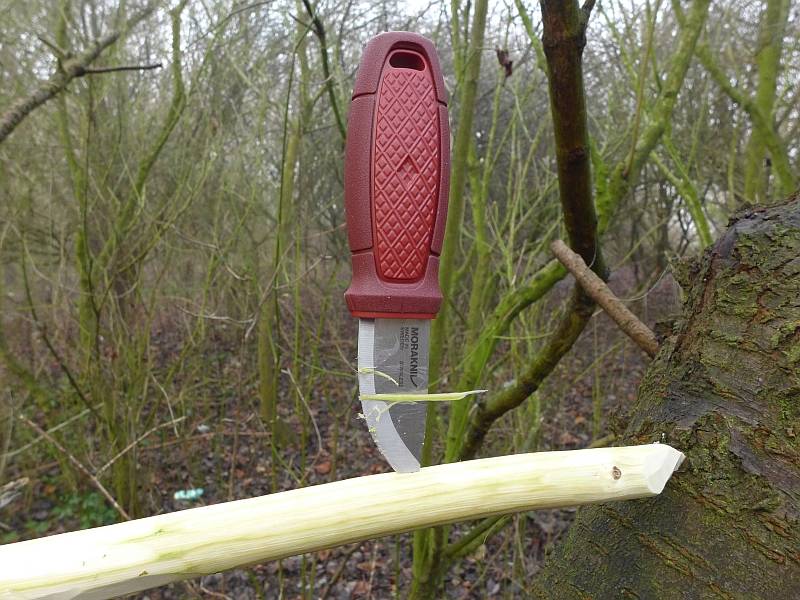
I would not go so far as to call it a folding knife, but it really is a pocket knife – with a fixed blade.
We can love blades of all sizes, and I can’t resist the biggest of blades, but taking into account your actual needs and the ‘cost’ of the weight you have to carry with larger blades, the Eldris makes a huge amount of sense.
Unless you are doing some heavy chopping or batoning, the part of the cutting edge you are likely to use the most, is that part you can apply maximum pressure to – the section of blade closest to the handle. This is exactly what the Eldris has.
Never a fan of the ‘neck knife’ (nor of the term), the Eldris has won me over and become a regular companion, frequently round my neck!
Review Summary
The views expressed in this summary table are from the point of view of the reviewer’s personal use. I am not a member of the armed forces and cannot comment on its use beyond a cutting tool or field/hunting knife.
Something that might be a ‘pro’ for one user can be a ‘con’ for another, so the comments are categorised based on my requirements. You should consider all points and if they could be beneficial to you.
| _______________________________________________ | _______________________________________________ |
| Things I like | What doesn’t work so well for me |
| _______________________________________________ | _______________________________________________ |
| Pocket-sized fixed-blade knife. | Relatively expensive compared to other Morakniv models. |
| Secondary locking strap. | You will want more than one. |
| Can be worn round the neck or carried in a pocket. | |
| Comfortable handle. | |
| Ambidextrous. |
Discussing the Review:
The ideal place to discuss this reviews is on a forum. If you started reading the shorter forum version of the review, but followed the link this full exclusive review, please return to that forum to discuss the review there.
If you read the review entirely on Tactical Reviews, please consider one of the following to join in any discussion.
EdgeMatters – Sponsored Reviews (UK based Forum for Knife Makers and Collectors)
BladeForums – Knife Reviews (US based Forum for Knife Discussion)
CandlePowerForums – Knife Reviews Section (Largest and Friendliest Flashlight Community Forum)

